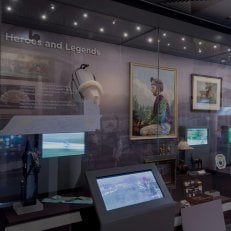Performing Arts CEO – It’s a lonely job
Fancy running a theatre, an orchestra, an opera, ballet or dance company? To many this may seem like an attractive proposition, but those with experience in leading and running Performing Arts organisations – will admit that, although it has its rewarding moments, it is often a particularly lonely job.

Performing Arts CEOs often find themselves in an isolated position, a little way removed from their free-lance creatives (musicians, singers, conductors, actors, directors, dancers, choreographers) and from their Board of voluntary non-executive trustees. Standing at the head of the organisation’s administration, you need artistic know-how, as well as people skills and commercial and fundraising agility. In the ‘mixed economy model’ that most arts organisations operate under, both sides expect something fundamentally different from their CEO’s often impressive resources and they, in turn, can find it almost impossible to satisfy both sides.
Yet, when success is celebrated the artists take a bow in grateful recognition of another artistic triumph; but when programmes fail, the Board is quick to look to the head of the administration as the instigator of a box office or marketing calamity. Arts managers know this is a cross they have to bear. You won’t last long in the job if you can’t cope with this reality.
It’s the love that drives the Art
Our creatives want to make the Art they are passionate about. Their manager, in their view, is there to make that possible; to raise the money and provide the environment that will allow them to create their Art. They are supported in this by trustees who often joined the organisation because of that same passion. They either cherish a life-long love for the art form, or have been pulled into the organisation by their personal acquaintance of the group or an associated individual. It means that their loyalty often lies in the first instance with the artists. Love is a big driver here, but as we know, love is often blind.
Although the diversity mix is improving, Arts trustees tend to be benefactors who have cut their teeth in a commercial business environment where more is always better. But these laws don’t apply in the Performing Arts economy. If every production loses money, doing more productions will lose even more money; and this means even more fundraising. This is where Arts managers start chasing their own tail.
I should add that, for most managers, enabling creativity and the realisation of an artistic vision is a prime motivation, but this will be tempered by a deep understanding of the risks involved. The everyday risks of running a business and balancing a budget apply equally to arts charities. The CEO will have to carry these risks; but they’ll have to do so quietly. In an organisation where everybody around them is indulging in the love for what they do, and where you don’t want to be the continual party-pooper, this can feel a lonely place.
But what about the “charity” bit?
Reminding those who curate and create the artistic product of the organisation’s charitable mission isn’t always an easy job and it’s remarkable how rarely some Arts organisations refer back to the core of their charitable objectives and the intended beneficiaries. Most Arts charities’ constitutions or long-term business plans contain a reference to the mission and in my experience they don’t tend to vary widely. It will go something like this:
To encourage, advance and increase the interest of the general public in the knowledge, understanding and appreciation of the art of [music/ drama/ opera/ ballet/ dance..] through the promotion, support and encouragement of the art in all its manifestations.
As evidenced by this (fairly standard) mission statement, those that should benefit from the organisation’s charity are the members of the public; not just the existing audiences, but as wide a constituency as you can possibly reach. Quite rightly, funders these days are no longer interested in preaching to the choir. They are primarily focussed on the public benefit of their grant-giving and on including as wide a range of beneficiaries as possible. Arts fundraising for the sake of the Art itself is an increasingly difficult ask. I realise that this is a message that is sometimes difficult to accept.
Who are we serving?
One can wonder if there is an inherent incompatibility between an artist’s creative drivers and the purely altruistic intentions of the charity they belong to. Performers may rely on the organisation for their livelihood, but they are not the intended beneficiaries of the organisation’s charity.
A trustee once said to me that it was the CEO’s role to “deliver performances and raise the money to keep the musicians in work”. A statement that revealed a profound misunderstanding of the mission and purpose of his own organisation. Surely, our purpose shouldn’t be quite that self-serving? Shouldn’t we be addressing the needs of our beneficiaries instead of our own? It reminded me of this little pearl of fundraising-wisdom: Funders give because you ‘meet’ needs, not because you ‘have’ needs.
This dilemma can leave Arts leaders facing the existential question: Who are we serving? Do we raise our funds to continue to exist, so we can continue to indulge in our love for the artform, or do we want our Art to change lives, open doors and deliver benefits beyond our own coterie?
Gijs Elsen
Contact us
A number of Craigmyle consultants have years of experience as Performing Arts CEOs and appreciate the huge pressures you are under. Our services are much wider than fundraising. We can bring objectivity and some distance from the accepted ‘what we do and how we do it’. You may need a development plan, a recovery plan, a restructure or a fundraising audit. Or maybe you are simply in need of an ally; a sympathetic ear, somebody to bounce ideas off or to help you think outside the box. If so, feel free to contact us for an initial conversation.





